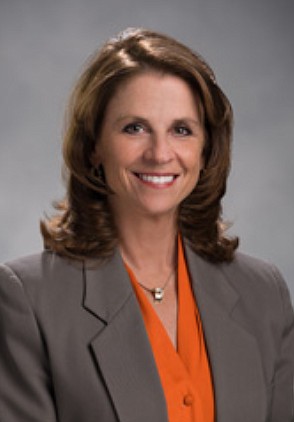Tackling growth together
COEUR d’ALENE — There’s no silver bullet to fix the issues of growth and housing that face Kootenai County residents.
“There’s not one thing,” Coeur d’Alene City Council member and affordable housing advocate Kiki Miller told a crowd this week. “There’s a bunch of different things we have to try to deploy.”
Around 40 people gathered Thursday night at the Harding Family Center in Coeur d’Alene to hear a forum discussion focused on the role of cities, counties and builders presented by DART, a nonpartisan group.
Miller said a survey of around 3,700 Kootenai County residents revealed that their top priority related to growth is preserving open space on the prairie, followed by school capacity and traffic concerns.
City and county planning are key to addressing those concerns.
“Planned growth is almost always more desirable and a lot less costly than unplanned growth,” said Dave Callahan, Kootenai County Development director.
One way that cities and counties ensure that their growth plans don’t overlap is through defining areas of impact, the geographic areas where cities are expected to grow and eventually annex.
Cities define these areas with their counties and form agreements about which plans, policies and development standards will apply there.
In Kootenai County, some areas of impact are 20 years old. For that reason, Callahan said the areas of impact ought to be reconsidered.
He said he’s also interested in exploring how the comprehensive plans for the county and cities can be made more consistent.
“Our regulations, frankly, don’t necessarily match up from city to city,” he said. “I’d like to change that over time.”
Allen Dykes of the North Idaho Building Contractors Association gave a builder’s perspective on growth. Even developers want to see responsible growth, he said.
“Growth for growth’s sake isn’t good,” he said. “If we’re just going as fast as we can and we’re not responsible, then we’re going to outstrip the resources.”
When he cut his teeth as a builder in the Seattle area, Dykes said, it was so common for people to venture out farther and farther from the city center in search of affordable housing that there was an expression for it: “Drive until you qualify.”
That practice is increasingly necessary in North Idaho. Dykes said it also erodes community.
“We have schoolteachers teaching in Coeur d’Alene who are living in Spokane Valley because that’s where they can afford to buy a home,” he said. “It makes me sick.”
The median income for a family in Kootenai County in 2021 was about $65,500 per year.
A recent search of property listings showed that only 74 properties countywide were affordable for a family in that bracket. All but nine were manufactured homes on leased land.
Those numbers highlight the importance of increasing the housing supply, particularly for workers.
Representatives from the county, as well as the cities of Coeur d’Alene, Hayden, Post Falls and Rathdrum, recently convened to explore possible solutions at a multi-jurisdictional workshop.
The workshop was presented by the Regional Housing and Growth Issues Partnership, a task force tackling growth and affordable housing.
“I’m so proud of all the people in our community who came together,” said Miller, who has led the task force since its inception about two years ago.
One option to increase the supply of affordable workforce housing are land lease programs, in which a company buys property, builds housing and then leases the homes to employees or provides them on a rent-to-own basis.
“Employers are looking at those programs,” Miller said.
In fact, a development intended for health care workers is expected to break ground in spring 2023.
Miller said many developers are willing to come to the table and discuss workforce housing solutions with certain incentives.
At the joint planning workshop, North Idaho Building Contractors Association presented a number of considerations that area developers and builders would like in exchange for attempts to provide workforce housing.
The requests include fast-tracking permits, consideration of pre-approved designs, increased density and expansion of approval on building types, such as micro condos and tiny home blocks.
Those who attended the workshop overwhelmingly indicated that the event should be held multiple times per year. Miller said the feedback was heartening, as was the high participation from the county and its cities.
“We need to get all the jurisdictions involved,” she said. “If it affects one of us, it affects all of us.”





